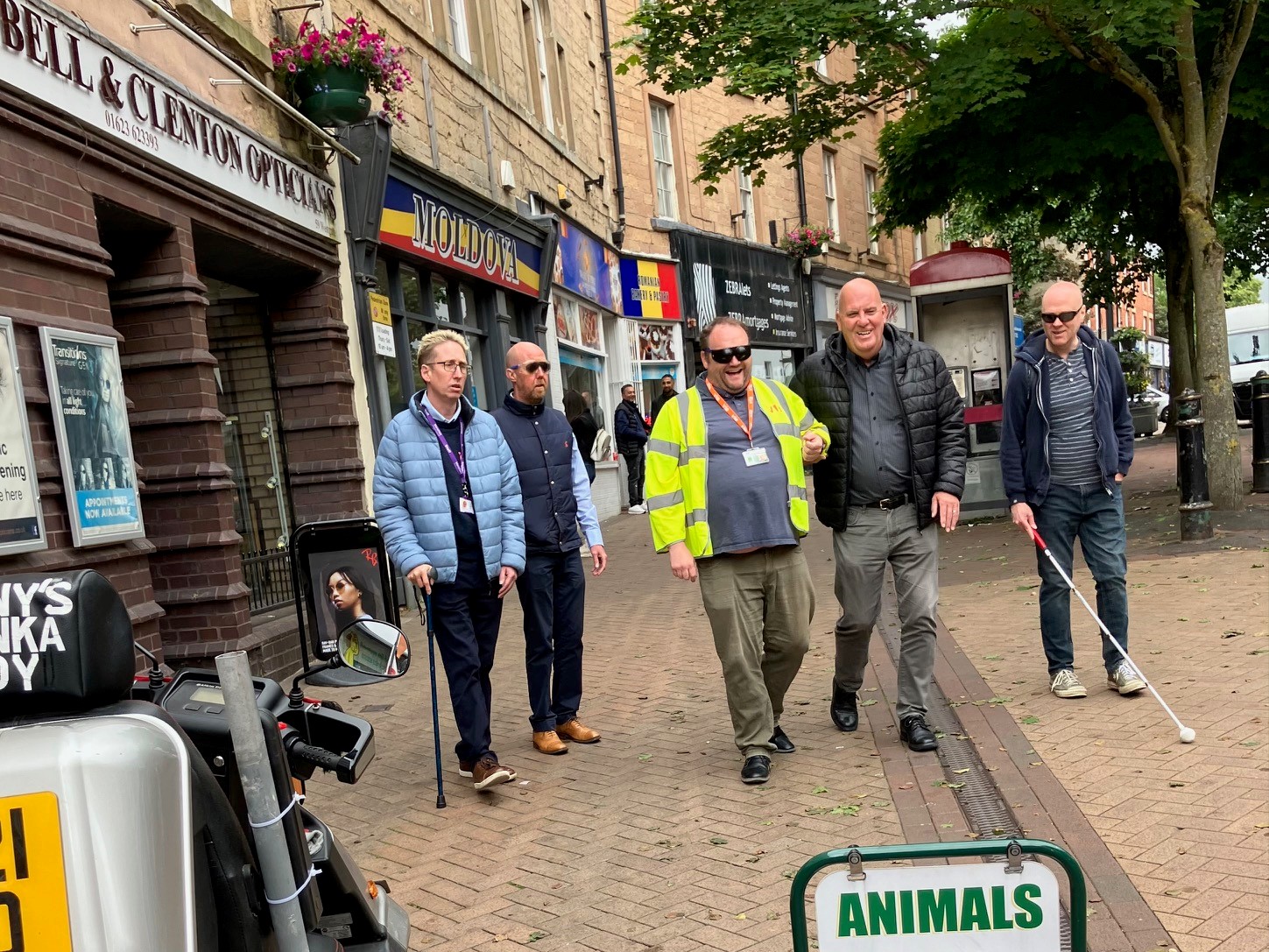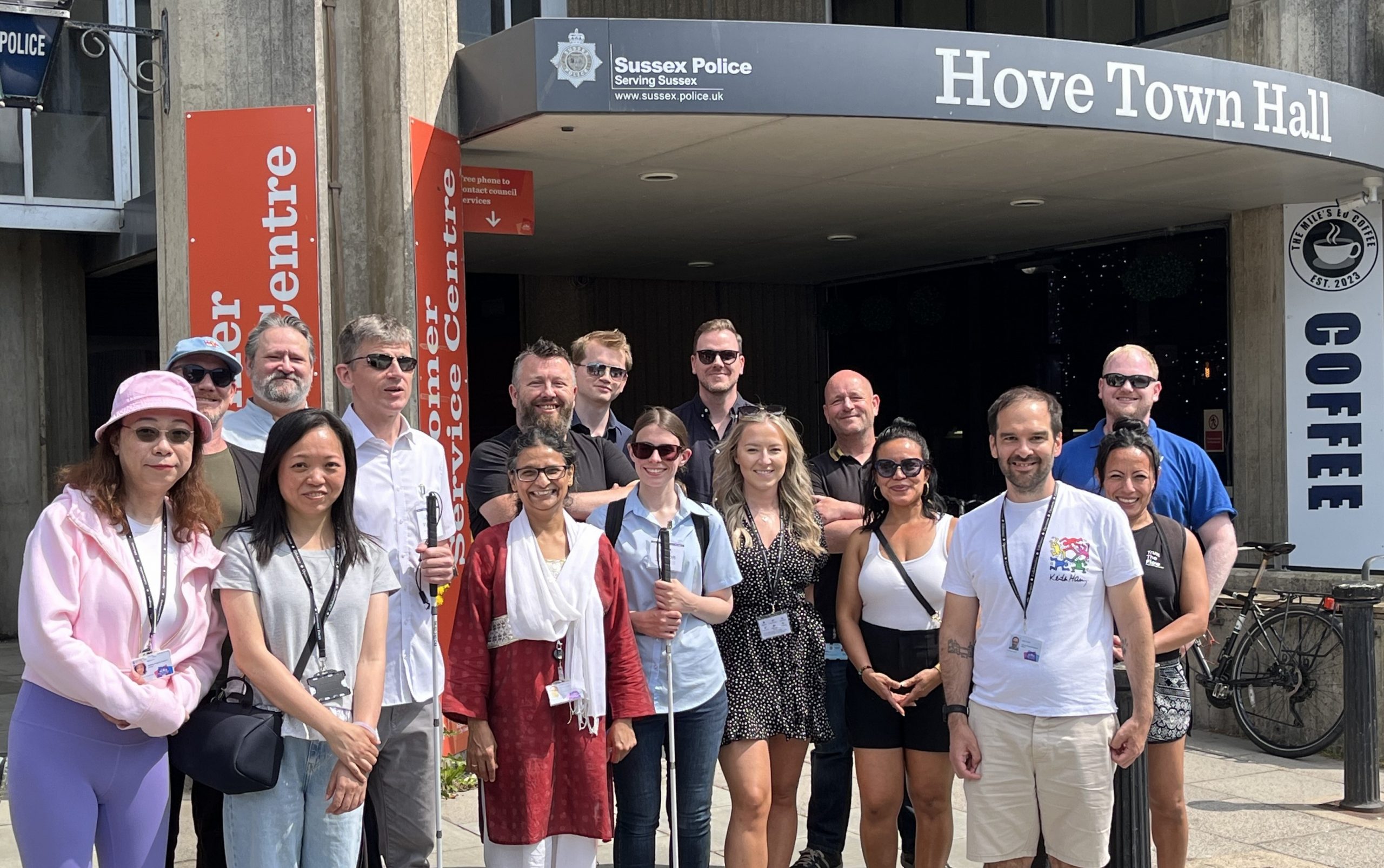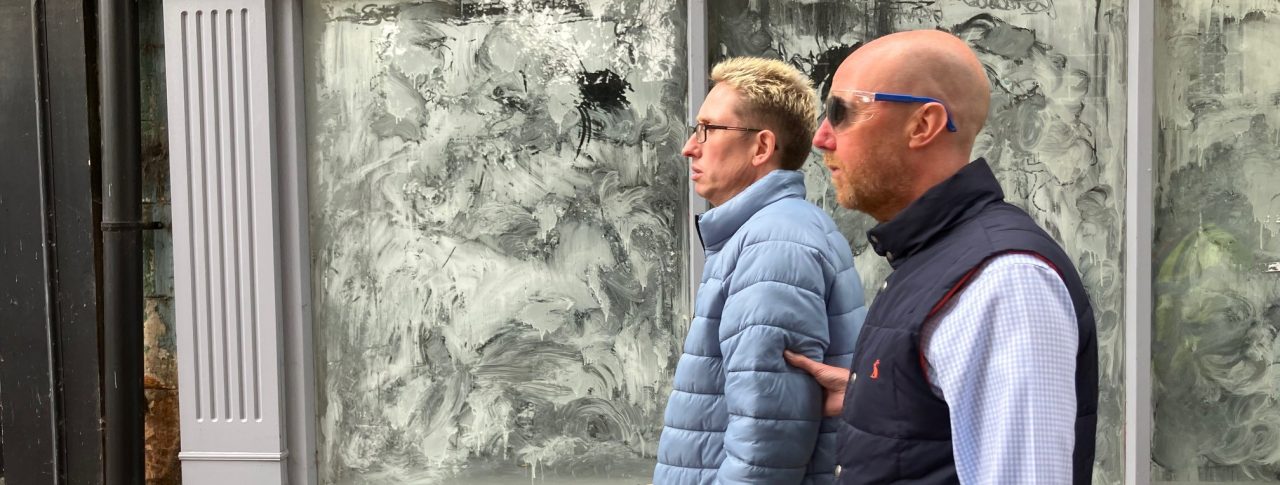Sight Loss Councils influence more accessible street design
Sight Loss Councils (SLCs) in Nottinghamshire and East Sussex have been raising awareness of street obstacles to inform more accessible street design. This includes through work with Nottinghamshire County Council, Mansfield District Council and Brighton and Hove City Council.
We invited key decision makers from each council to attend guided walks wearing simulation spectacles that simulate various eye conditions, and blind folds.
SLC volunteers also ran a session to increase awareness and understanding of sight loss using their own lived experience. They also highlighted how to best meet the needs of blind and partially sighted people in their work.
Why is accessible street design important?
When Sight Loss Councils deliver simulation glasses walks and vision awareness sessions to local councils, especially to staff responsible for town planning, it really helps key decision-makers understand our needs as blind and partially sighted people. It also helps them to understand why accessible street design is so crucial.
This is vital because 75 per cent of blind and partially sighted people told us that accessible streets matter to them the most (Listening Month, 2022).
Sight Loss Council Engagement Manager at Thomas Pocklington Trust, Matt Harrison, added:
“As someone who is registered blind and uses a long cane, the accessibility of our streets is key to my independence and physical wellbeing. Hazards can include fixed objects such as street furniture like bollards and lamp posts, but also undetectable shared spaces such as parking bays on pedestrianised streets.
“Shop advertising signs and discarded e-scooters are also very difficult to negotiate as their positions change from day to day. Sometimes they are even left on tactile paving which is specifically there to help me safely navigate my surroundings.”
Matt explained that difficult-to-navigate streets increase anxiety levels, and could ultimately lead to someone having to stay indoors rather than going to work. It can also mean they don’t attend a health appointment or socialise with friends or family. He said:
“When you have no choice but to walk somewhere, it’s essential that we can do so confidently and safely.”

Mansfield District Council staff being guided down a street whilst wearing simulation spectacles (special glasses that simulate eye conditions).
Feedback
Paul Tebbitt, Policy Planner at Mansfield District Council, gave feedback about the session with Nottinghamshire Sight Loss Council around how it will inform future decision making. He said:
“The session was delivered in a very professional way but with a very personal touch. The use of sim specs offered an interactive experience and gave a real insight into some of the challenges faced. It also gave an appreciation that we need to be better at creating ‘inclusive’ places.”
“Our engagement has helped me to think more carefully about how we take account of the needs of blind and partially sighted people in our decision making – whether that be in designing public realm improvements, regeneration projects or new developments.
“Following the meeting, I emailed colleagues (including the Town Centre manager, Head of Planning Services, Regeneration Manager and Corporate Director) to explain what a useful session it had been and that we need to mindful of these issues in the future.
“I also explained that you were willing to ‘get involved’ in shaping schemes and offering your expertise in the future so that projects can be well-designed and inclusive.”
Matt Harrison said:
“The feedback we receive is always very positive, and participants definitely appreciate being able to experience their surroundings in the same way as blind and partially sighted people. We are keen to build these relationships as it will increase the public’s awareness of vision impairment. It will also have a positive impact on future urban design and make for more inclusive environments.”
Delegates at Brighton and Hove City Council also fed back on the importance of considering clear streets in pavement design. One delegate added:
“I enjoyed the ability to use the glasses and visualise how it feels to live with these conditions, and hearing about the lived experiences.”

Sight Loss Council members, Thomas Pocklington Trust Staff and Brighton and Hove City Council officers at Hove Town Hall before setting off on a guided walk.
Learn more about accessible street design
Publication date: 10 July 2024

